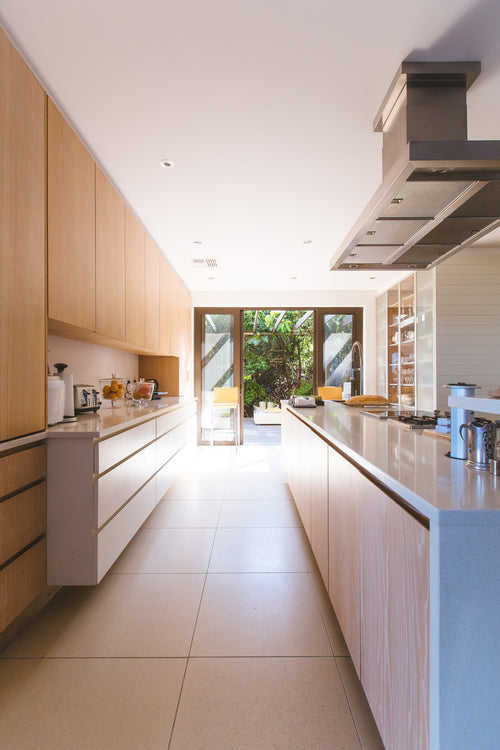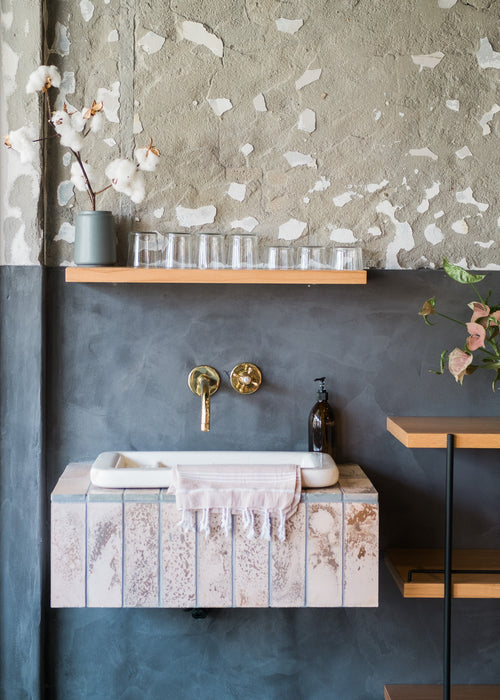SHOPPING FOR NATURAL STONE COUNTERTOPS? HERE ARE 5 HELPFUL TIPS

Whether you’ve just bought a new home, or you simply want to give your kitchen or bathroom a makeover, you may be shopping for natural stone countertops such as granite, marble, quartzite or soapstone. There are many types of stone countertops to consider, and with the various color and texture options available, selecting the best choice for you can quickly become overwhelming!
Here are 5 helping tips to help you narrow down your choices and choose the best natural stone countertops for your home and family.
#1: PUT YOUR USE NEEDS FIRST
Sometimes, people make the mistake of choosing natural stone countertops based only on their appearance. While appearance is certainly important, we suggest starting with your needs and going from there.
For example, are you someone who cooks dinner every night? Do your countertops need to withstand the heat of cooking pans and discoloration from stains? Do you have small children who might leave fingerprints and other messes on your countertops? Are you a clean-every-day type of person, or only when it’s really needed?
If you anticipate your countertops getting a lot of traffic, then your priority should be choosing a durable natural stone that will stand up to a lot of wear and tear. If you’re more concerned with the countertop’s appearance than its utility, you may find that you end up with damaged countertops that don’t look the way you want them to—or have serious anxiety about keeping them pristine when that just isn’t a reality for your lifestyle.
#2: COMPARE THE PROPERTIES OF STONE COUNTERTOPS
While you’re focused on durability and use, a good way to evaluate stone countertops is to compare their properties. Some of the most durable options include quartzite, granite, and soapstone. Here are some things to keep in mind:
-
Quartzite is resistant to staining, etching and abrasion. It’s nearly twice as hard as glass and harder than a blade of a knife.
-
Granite is one of the hardest stones used in countertops and one of the most popular choices for good reason: it’s resistant to heat, scratches and stains.
-
Soapstone is almost completely nonporous and durable despite its soft, soap-like texture. It can be easily scratched, but also easily brought back to original beauty.
-
Marble and travertine are beautiful, but softer stones. Both are vulnerable to acid etching and other types of damage, including cracking, chipping and water staining. They must be sealed to retain good condition and appearance.
It’s important to choose natural stone that has properties most in line with your expected use and habits.
#3: KEEP AFFORDABILITY IN MIND
The price of natural stone countertops can range widely from affordable to breathtakingly expensive. If you’re working within a budget – and most of us are! – then it’s important to consider the cost when you choose natural stone countertops. Prices of natural stone vary widely from as little as $50 per square foot to more than $550 per square foot!
The way stone is priced may depend on where you live regionally. Certain stones are more readily available in different regions of the country, and port cities will typically have better pricing because of proximity to imported stone. And remember, just because a stone is expensive doesn’t mean it’s better or more beautiful. Some of the most conventionally beautiful stone choices are also the most economical.
Marble, soapstone, and quartzite are three of some of the most expensive natural stone countertop options. If you can afford marble and you seal it properly, it can add elegance and style to your home. However, there are more affordable options available that can give you a similar aesthetic. Stone countertops that are more affordably priced include some granite, travertine, slate, and limestone.
Softer stones will require a more maintenance and special care to keep them in tip-top shape, so it’s important to consider maintenance expenses when you’re looking at overall costs. Keep in mind that whatever type of stone countertop you choose, you’ll want to seal it to keep it looking its best.
#4: TAKE YOUR STYLE AND DÉCOR INTO ACCOUNT
Once you’ve considered durability and price, the next step is to think about the fun part—the appearance of your countertops. Natural stone offers a variety of options and colors. Here are some pointers to help you choose:
-
Marble and travertine both have veins in them and are available in a wide array of colors. When most people think of marble, they picture colors ranging from frosty white to medium gray, but marble actually has a wide range of colors from deep oranges, soft blues and cool blacks (which come at a cost!). Travertine is typically found in warm, neutral tones.
-
Granite has a sparkling appearance that becomes more apparent when the stone is polished. It has most commonly has hues of white, pink, gray and almost-black, although it’s possible to procure rich greens, browns and blues.
-
Soapstone almost always darkens with use. It can range in color from brown and gray to green and blue. It often lends a sleek, modern appearance to a kitchen or bath. It looks incredible with white or light-colored cabinetry.
-
Quartzite typically comes in white or gray and, like granite, can take a polish to bring out its beauty. It’s a great choice for people who desire the look of marble but need more durability from their countertops.
Most people who invest in stone countertops anticipate living with them for years. You should make sure that the color and style you choose is something you love.
#5: WHAT ABOUT MAINTENANCE?
The final tip has to do with maintenance. Some natural stone countertops require more maintenance than others. For example, marble and travertine require more labor and upkeep than granite.
However, any of the natural stone surfaces discussed here will benefit from applying a countertop sealer to protect them and keep them looking beautiful. You can reduce your maintenance costs by choosing a countertop sealer that combines the best properties of topical and penetrating sealers, protecting the counter from the inside out. Pick a sealer that will minimize existing scratches and nicks while also leaving behind a shielding layer to keep your countertops free of stains and bacteria buildup.
It’s important to remember there is lot more to consider than just aesthetic properties when choosing a natural stone countertop. These tips can help you pick a natural stone that’s right for you and your family in terms of durability and upkeep, so you won’t be faced with surprises once installation is complete.



